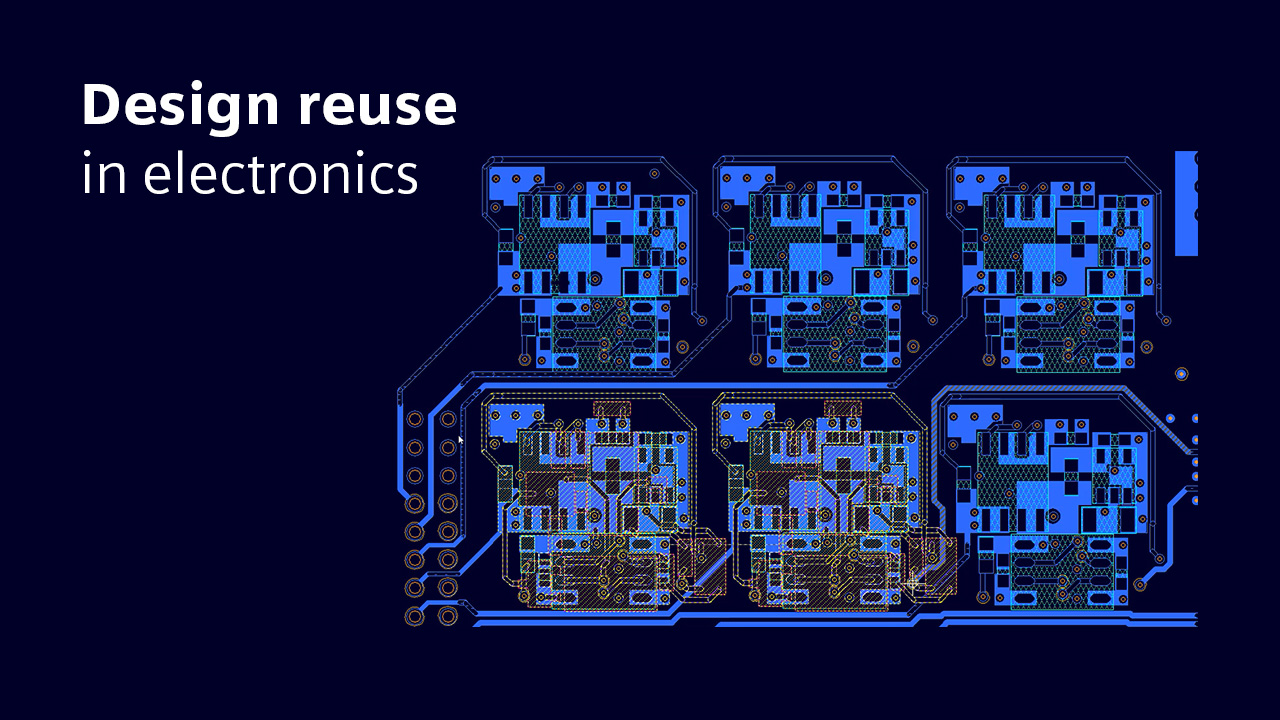Design reuse in electronics

Last year, I sat with Steph Chavez, the host of the Printed Circuit Podcast, and engaged in a conversation about design reuse. At the time I was working as an Application Engineer at L3Harris Technologies, but soon after I joined the Siemens team as a Technical Marketing Engineer. My background offers me a unique viewpoint as I have seen design reuse used differently and have learned what works and doesn’t work.
Understanding design reuse
One of the primary obstacles to design reuse is the reluctance among engineers to fully embrace. The underlying issue often stems from a lack of traceability – the uncertainty surrounding the original design’s requirements, analysis, and deployment history. This is often common when larger companies have bought many smaller companies and have designs coming from multiple sources. Additionally, within larger organizations, inconsistent practices across business units hinder seamless design reuse. Many engineers simply don’t want to use other engineers’ work and would rather completely create their product from scratch.
Overcoming roadblocks in design reuse
Tackling these challenges requires a comprehensive approach. It is important to establish a common ground within the organization. A unified central library becomes the foundation for successful design reuse, encompassing standardized footprints and a shared classification for managing blocks and reusable designs.
From a micro perspective, you should define requirements and analyses for each design while maintaining accessibility throughout the design lifecycle. Use the minimum number of layers in the layout for a reusable block to promote flexibility without compromising functionality.
Beyond the establishment of a centralized repository, the journey towards successful design reuse necessitates a more nuanced approach that includes the cultivation of standardized practices across the organization. Companies that have taken this holistic approach have seen not only enhanced traceability but also a harmonious convergence of diverse design practices into a cohesive whole.
Overcoming resistance
There are some key strategies to employ in order to overcome resistance to design reuse within an organization. The emphasis should be placed on creating a shared repository for requirements, analyses, and design data. This centralized repository, bolstered by tools like Xpedition EDM Collaborate, not only enhances traceability but also instills confidence among engineers to readily embrace reusable blocks in their designs, as well as minimize mistakes.
Unlocking the transformative power of design reuse, necessitates a cultural shift, standardized practices, and effective communication. Embracing design reuse, as the industry continues to evolve, serves as a catalyst for streamlined processes, reduced development cycles, and the realization of successful project outcomes.
Successful design reuse
I want to highlight the importance of understanding the interfaces of reusable blocks. These interfaces, paired with effective communication between designers, allow for the creation of flexible and adaptable designs.
The takeaway from the overall conversation I had with Steph is that when implemented correctly, design reuse becomes a great tool for increasing efficiency and saving time. The journey to embracing design reuse in your company demands strategic planning, a unified approach, and a commitment embracing change. As the electronics continue to become more complex, design reuse remains a beacon for optimizing processes and ensuring success in electronics design projects.
Comments
Leave a Reply
You must be logged in to post a comment.



I appreciate the thoughtful and nuanced way this idea is expressed. Area Code